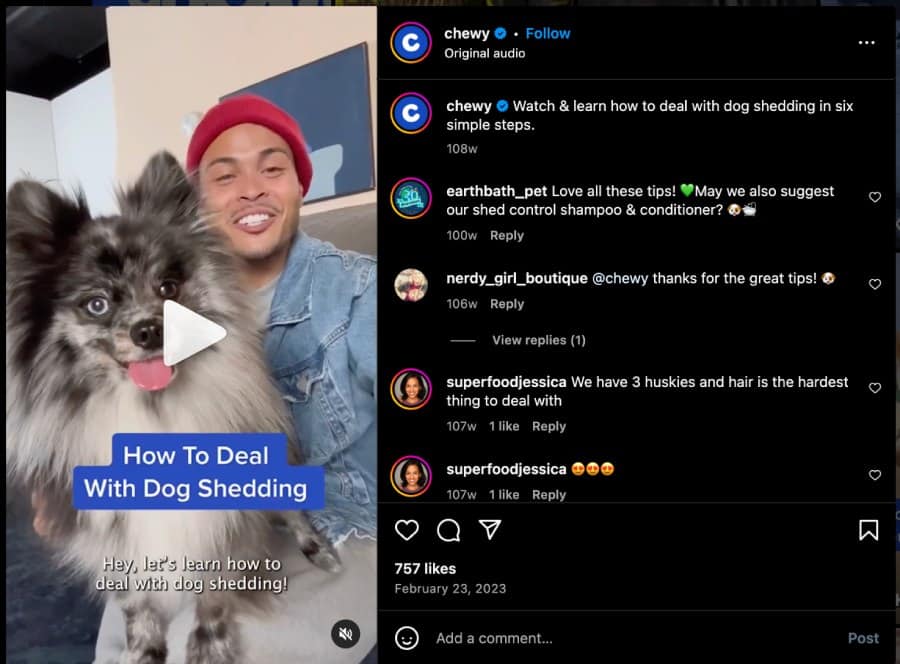If I had a dollar for each time someone said social media marketing was simple, I’d have enough to open a bank account. Sure, anybody with a smartphone can post on Facebook or make a TikTok, but social media marketing goes beyond that.
I know that because I’ve handled social media accounts for everything from tech startups to food brands. Below are some of the biggest social media marketing tips I’ve learned through the years.
Social media in 2025: What’s changed?
Before going into the social media tips for marketing, I first want to touch on social media and how it’s evolved in 2025. If you’ve been active on social over the past five years, you’ll know that plenty has changed in a short time. Players like Bluesky, Threads, and BeReal have entered the chat, while Twitter transformed to X, and TikTok was banned and brought back.
But aside from these players, some of the biggest changes in social media in 2025 have come from connections and the need to personalize.
- People use social media for everything now — from connecting with friends to discovering, researching, and purchasing from brands.
- Algorithms constantly personalize users’ feeds, making users expect more personalized experiences than ever from brands.
- People want to feel valued by brands, not just sold to.
- People crave genuine, long-term connections on social media, more than just one-time interactions.
These are just the tip of the iceberg. With my best social media marketing tips, you can navigate all these changes as a small business.
If you haven’t yet, I highly recommend making a social media plan first. A plan clearly outlines your objectives for marketing on social media and gives you a focused strategy to meet them.
Alternatively, partnering with a social media marketing agency is also a good option. One agency we’ve vetted for small businesses is Lyfe Marketing, which offers both organic and paid social media campaigns and has a good track record with small businesses.
1. Stick to the few best social media platforms to avoid social burnout
When I was new to social media management, I made the rookie mistake of trying to be on every platform available, from Facebook to Reddit to TikTok, trying to get noticed by everybody. But that only led to burnout and quickly running out of content ideas. I also didn’t have any long-term, consistent followers.
Therefore, my first advice is to focus on the few best platforms for your brand and target audience. By that, I mean the platforms that best fit your brand identity and where your audience spends most of their time and are most active.
For instance, maybe your cafe’s target audience isn’t so active on TikTok, but they’re a lot more engaged on Instagram. Maybe your crafting blog isn’t gaining traction on Facebook, but reposting them as Pinterest pins gets you more shares and comments. Find the two or three platforms that work and double down on them.
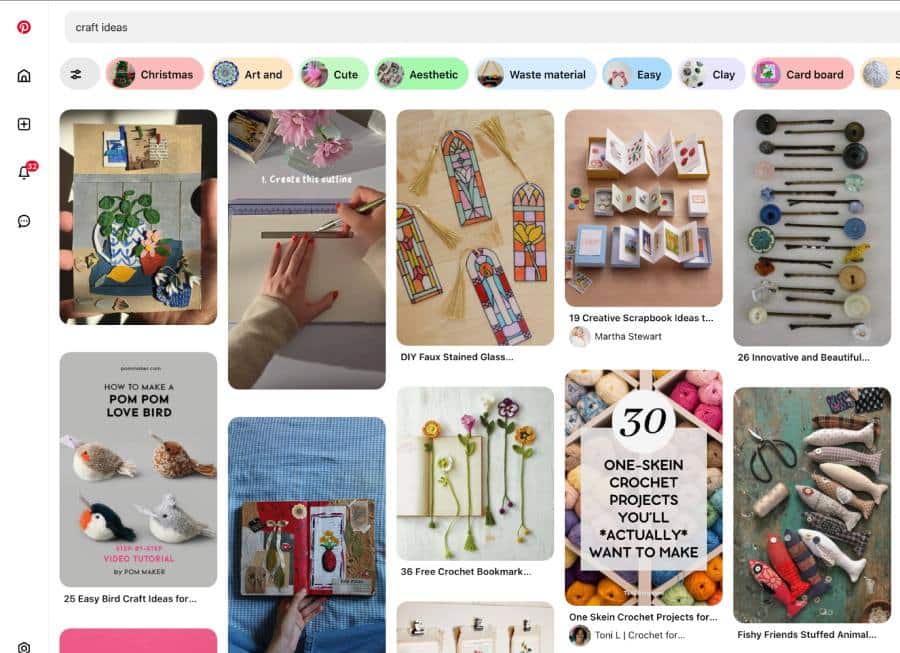
Pinterest is a less crowded social media platform, popular for crafts and how-to content. (Source: Pinterest)
2. Post a good mix of shareable and valuable content to reach new audiences and keep current ones engaged
There’s always the dilemma of what content to post on your brand’s social media page. What I’ve found most effective is a mix of shareable and valuable content — it’s what consistently attracts new audiences and keeps them coming back.
Shareable content is easy to digest and share, like memes or trend-jacking posts, and is for reaching new audiences. Meanwhile, valuable content is anything that provides real value to audiences, like product demos or infographics, and keeps audiences engaged with your brand. I like to keep to a two-to-one ratio: for every two shareable posts, I post one piece of valuable content.
-
- Shareable content: Anything that’ll get people sharing and reacting, like relatable memes, hopping on viral trends, or seasonal greetings.
- Valuable content: Anything that audiences can benefit or learn from. For a B2B business, this might mean blogs or infographics about your industry. For a home cleaning service, these might be tips on spring cleaning your home. For a real estate agency, this might be a Q&A video on the biggest challenges of the real estate industry in your area.
Pro tip: Don’t cross-post everything. If you’re still crossposting everything in 2025, it’s time to rethink your strategy. Different content works for different platforms. An image infographic might perform well on Facebook but may get scrolled over on Pinterest. Tailor your social media strategy to each platform’s strengths.
Scheduling posts in advance can also make managing multiple social media platforms easier. Below are some of my favorite and the best social media scheduling tools for small business owners.
- Visit Later for a beginner-friendly tool for planning content calendars and scheduling posts.
- Visit Sprout Social for a tool that manages messages from multiple platforms and analyzes audience sentiment.
- Visit Hootsuite for an online tool for scheduling posts, monitoring brand mentions, and tracking trending topics.
3. Use the comments section to keep your brand on your audience’s radars
Here’s one of my favorite social media marketing tips I learned recently: Don’t neglect your posts’ comment section. If someone leaves you a comment, take time to reply. This shows that you genuinely care about your online community and are talking with them, not just at them.
Also, because of social media algorithms, replying to comments sometimes puts you back up in people’s feeds, bringing you in front of even more audiences.
4. Reshare content from users about your brand to build an active online community
When people post about your brand on social, aside from leaving them comments, reshare them on your profile (or even your story) and add a short comment. It’s one of my most reliable, tried-and-tested ways to grow a social media presence from scratch.
The more you engage with audiences on social, the more they keep coming back. When people show appreciation for your brand, appreciate them right back.
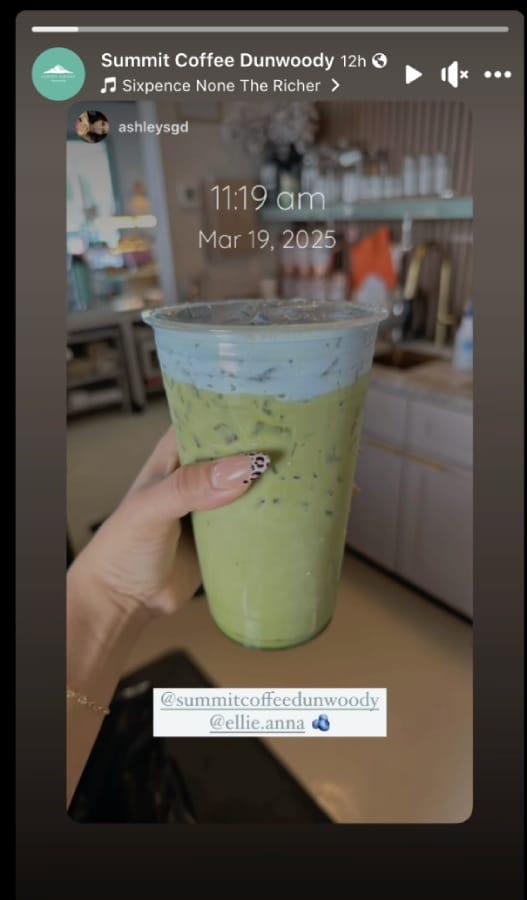
Resharing user posts is one of the most reliable ways to build an online community. (Source: Summit Coffee Dunwoody on Facebook)
5. Repurpose content into different formats to never run out of things to post
Recycling isn’t just for the environment. One of the most important social media marketing tips I learned is recycling (aka repurposing) content into different formats so you never run out of content marketing ideas to post.
For instance, a blog post can be repurposed into an infographic or Facebook carousel, while a product demo video can be spliced into shorter versions for TikTok or Instagram Reels. Audit your existing content and see what else you can make from it.
When repurposing content, tailor it to each platform’s dimensions. For instance, if you’re reposting an image into an Instagram story, resize it to fit those dimensions (1080px x 1920px). The same goes for videos: If you’re resizing YouTube videos for social media, resize them into vertical or square formats.
6. Complete your profiles to improve search visibility and progress the customer journey
In 2025, social media will increasingly become the new search engine. In fact, 55% of customers say they discover new businesses on social media. And when customers search for your brand on social media, they should easily find the information they need on your profile.
Your social profile should have a complete About section, with links to your website or online store (if applicable), location, open hours, and other contact details. This makes it easier for people to find out more about your business and move further along the customer journey.
An incomplete profile can make it harder for your page to appear for certain search terms. This is especially true when your business name or handle doesn’t highlight your core product or industry. And it can confuse users who have, no doubt, been wary of fake or duplicated social profiles in their feeds at some point.
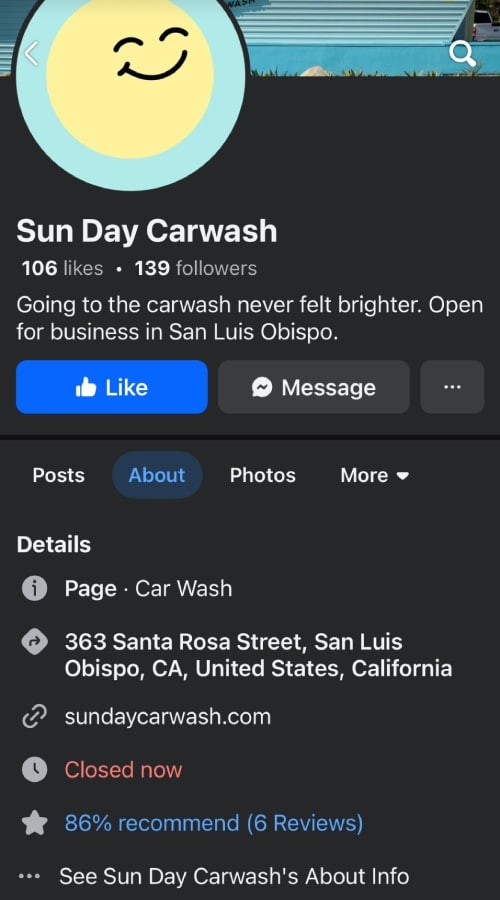
An example of a complete Facebook profile with all the important details from Sun Day Carwash. (Source: Sun Day Carwash on Facebook)
7. Address customer concerns promptly to build a positive brand reputation
It’s not unusual for customers to look to social media for customer service concerns. In fact, up to 60% of customers say they use Facebook for customer support. When that happens, respond to them promptly (and politely!) and resolve their issue as quickly as possible. If it requires more attention, ask to move into private messages for longer conversations.
This is important because customers expect customer service on social media now more than ever, and because it builds a positive reputation for your brand online.
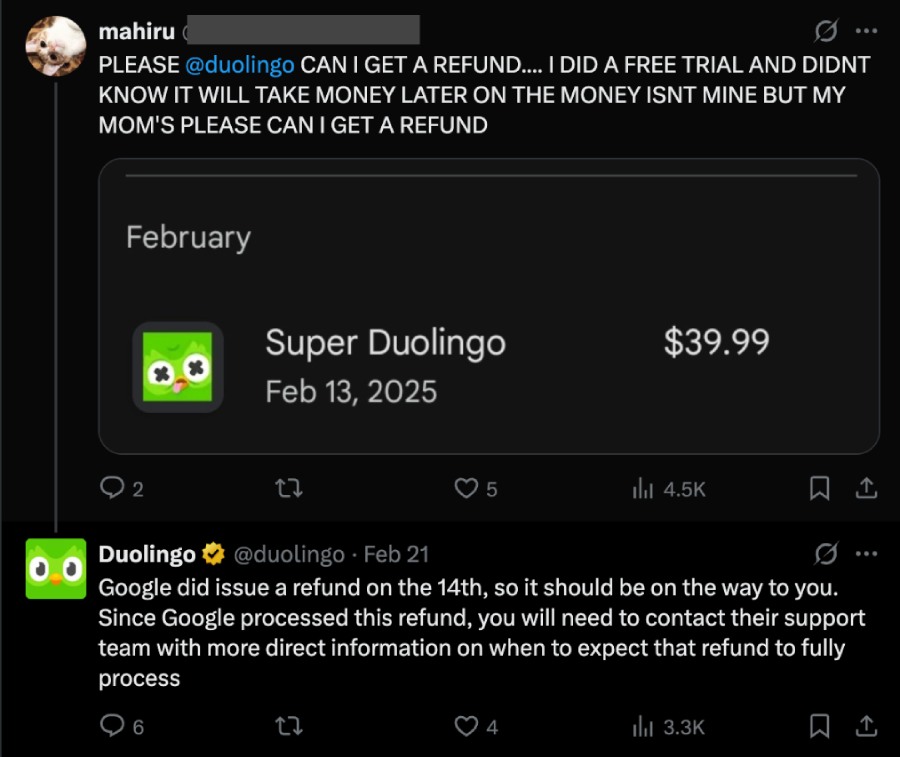
Address customer concerns on social media promptly and politely, like Duolingo. (Source: X)
8. Save time by preparing social media post templates
Social media relies on publishing content consistently. One of the biggest social media marketing tips I’ve found helpful in publishing more efficiently is preparing post templates in advance for regular content. For instance, I had templates for event announcements, seasonal greetings, and Facebook and Instagram Stories.
This not only makes content creation more efficient, but it also gives your posts a solid and consistent branding.
9. Show behind-the-scenes content to humanize your brand
If there’s one thing true about social media marketing techniques today, authenticity connects people. Audiences connect better with brands that feel more approachable and human.
Behind-the-scenes videos, such as a day in the life of your small business, short interviews with your team members, and office tours, are just some of the content that helps humanize your business and make you more accessible.
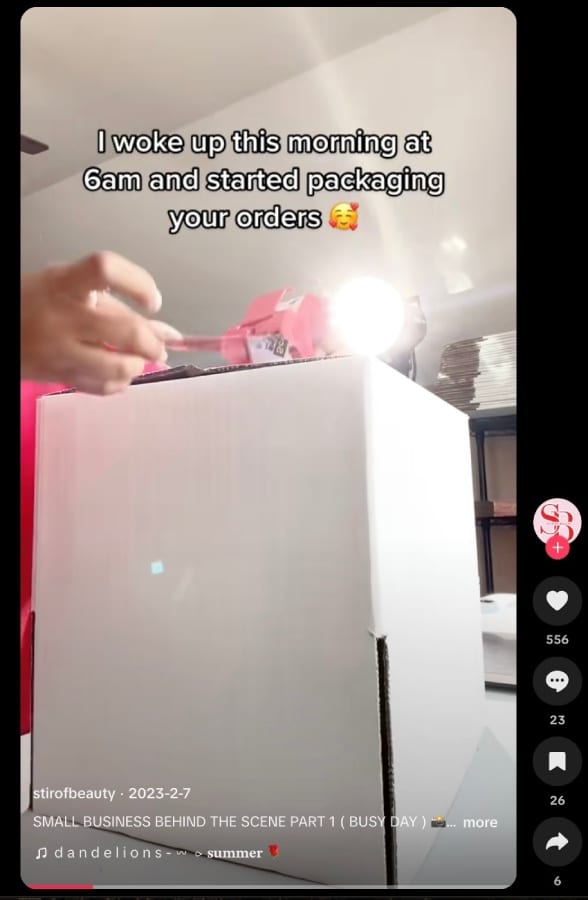
BTS content like a day in the life behind your brand helps you feel more relatable to people on social media. (Source: @stirofbeauty on TikTok)
A question I get asked often is, “What’s the best time to post content on social media?” There is no single best time — it varies for every brand. What works for a neighborhood cafe will differ from what works for a tech startup, although statistics say it’s generally at 8 A.M. on Wednesdays.
I suggest figuring out the best time that works for your brand. Post similar content at different posting times and continue using the times that perform best.
10. Turn dedicated followers into fans by giving them exclusive rewards
One of my biggest social media tips for marketing in 2025 is to focus on keeping your current followers engaged instead of constantly attracting new ones. Gaining new followers isn’t sustainable in the long run and doesn’t move them further along the customer journey. Meanwhile, engaging your most dedicated followers secures their loyalty to your brand.
This can be as simple as adding your most engaged Instagram followers to your “Close Friends” list and offering them exclusive discounts or sneak peeks at new products. Or offering a free gift to the first 10 people who comment on your post.
Marketing spotlight: Billie Eilish’s album teaser for her “Close Friends” on Instagram
Prior to the release of her latest album, Billie Eilish surprised her Instagram followers when she suddenly added them to her “Close Friends” list with a sneak peek of her album cover. While her list turned out to include all her Instagram followers, it still gave her fans a sense of exclusiveness and a feeling like they were part of her close social circle.
Your brand can do that too by inviting your closest and most engaged followers and offering them exclusive treats and rewards.
11. Partner with nano-influencers and creators to reach new audiences
Influencer marketing is on every brand’s digital marketing strategy list. But specifically, small-time nano-influencers and creators (usually with fewer than 5,000 followers) often perform better than big-time ones with hundreds of thousands of followers because they usually have tighter connections with their followers. They also charge less than bigger influencers.
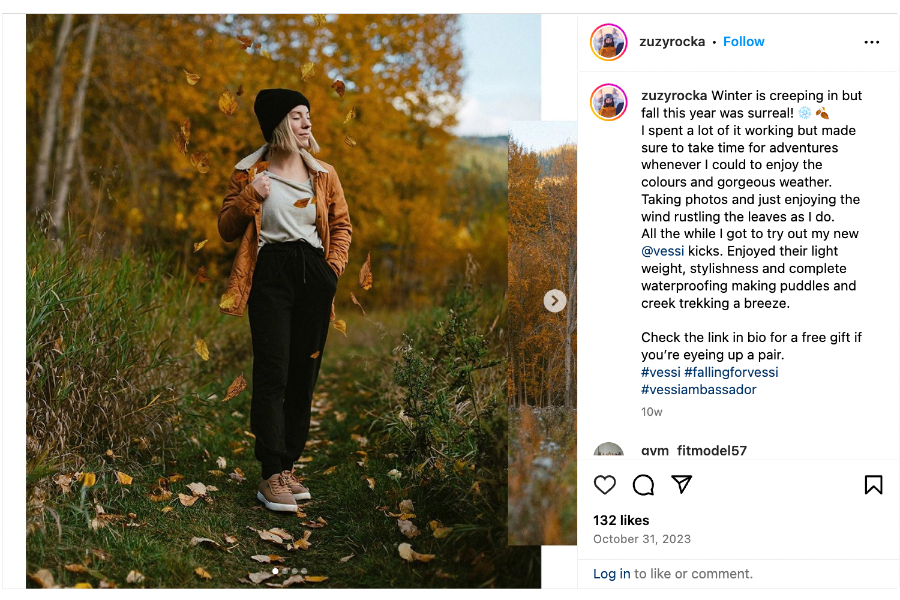
Nano-influencers with smaller followings often have tighter connections with their followers and lower costs per post. (Source: @zuzyrocka on Instagram)
How do you get started with influencer marketing? Start by finding the right influencers that match your brand identity. Then, message them to see if they’d be interested in a collaboration.
Decide on the type of partnership that works (sometimes, nano-influencers accept free products in exchange for a post, while others will have a rate card ready). Give instructions on the type of post you need.
12. Prompt engagement by holding contests and giveaways
When I was building a Facebook presence for a growing brand, a social media promotion strategy that was always present was holding social media contests and giveaways. This is because they were consistently our most engaging posts for social media and didn’t require much cost.
I only recommend doing this if you already have a steady follower base. Hosting contests and giveaways is a fun way to boost their engagement. Some examples of social media contests are themed photo submissions, hashtag contests, and tag-a-friend contests. Clearly communicate your contest mechanics to eliminate confusion.
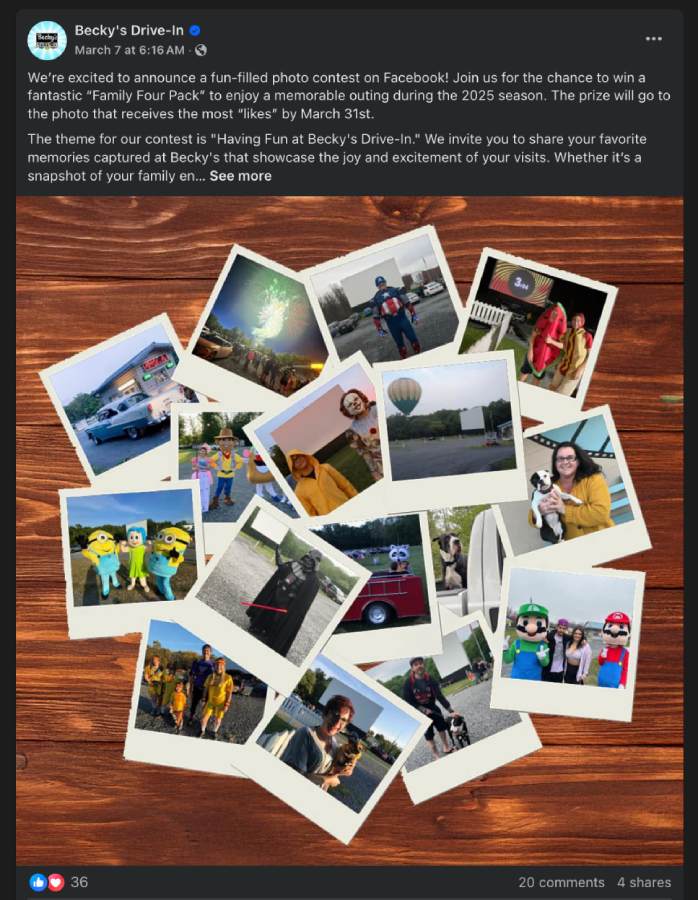
Social media contests are an easy way to generate buzz and engagement. (Source: Becky’s Diner on Facebook)
13. Talk like a person (not like a brand) to connect with audiences
More specifically, talk like one of your audience members, not as a robotic and faceless brand. Social media is all about making authentic connections, which you can’t do if you’re not speaking your audience’s language.
Use the same tone of voice, style, and language as your audience, from your post captions to your comment replies. It makes you more accessible to audiences and easier to communicate with.
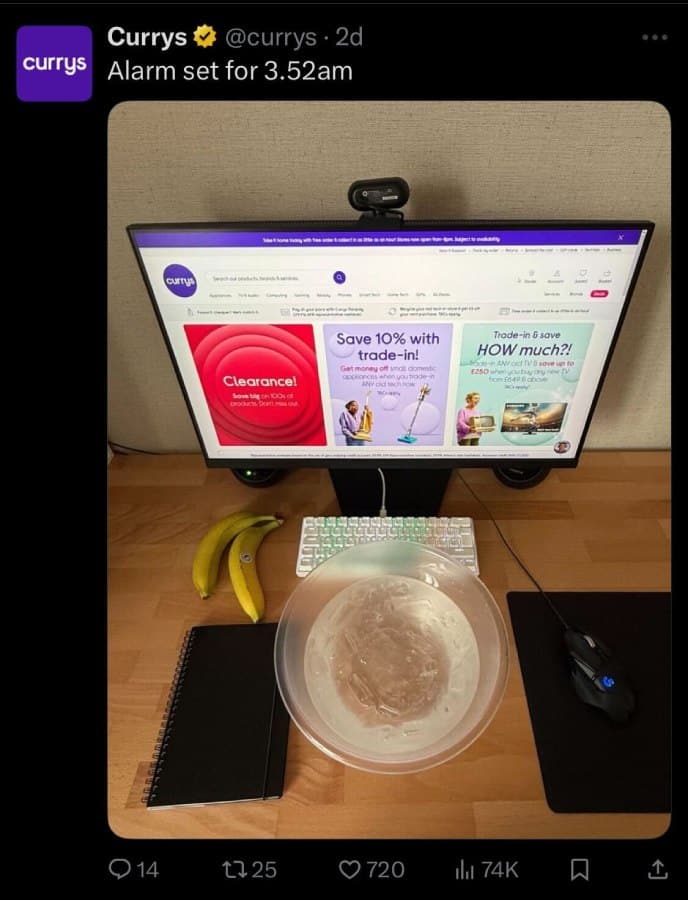
Currys is an excellent example of talking like a person, not a brand, to connect with audiences — especially being a tech brand.
Here’s an example: Say you’re teasing your new product launch to your Gen Z target audience on social media. Your caption might be something like, “👀 We have something exciting in the works” instead of just “New products coming soon.”
14. Gain credibility by showing off positive reviews
Did you know customers will spend up to 31% more on businesses with positive reviews? If you have good reviews, post them on social media to bolster your credibility and humanize your brand. Share testimonials as Facebook posts and keep them in an album. On Instagram, keep them in your Story Highlights so that people can easily access them on your profile.
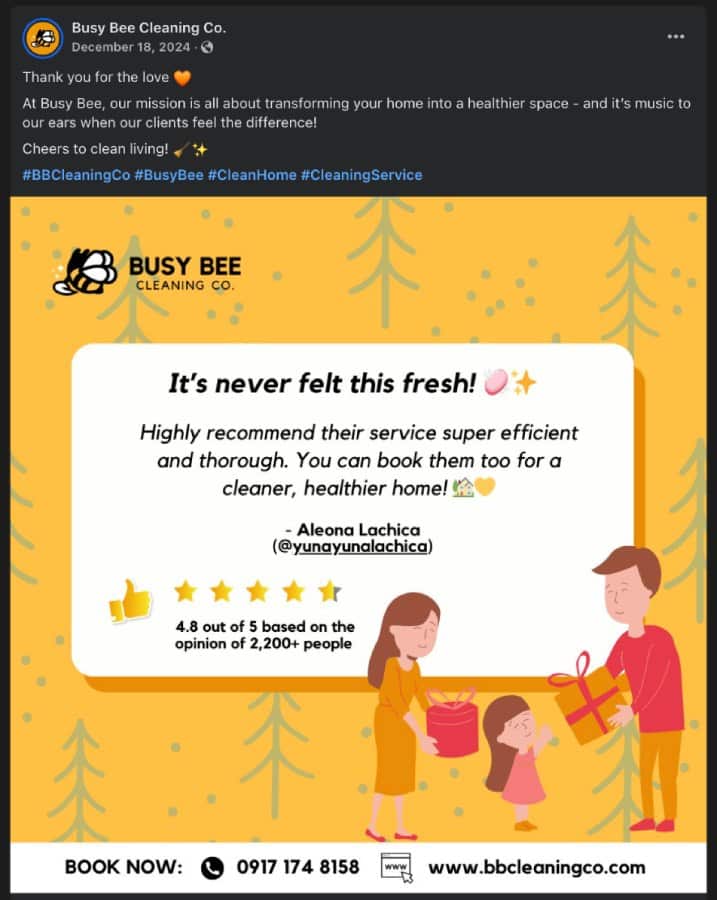
Posting positive reviews boosts your credibility on social media. (Source: Busy Bee Cleaning Co. on Facebook)
15. Use paid ads to get your brand in front of the people who matter
Social media advertising is one of the easiest and most cost-effective ways to get your business in front of new audiences. They’re especially helpful for getting people to complete a specific action, like visiting a web page or signing up for an event, especially during a specific time. This is why I use them most for promoting seasonal campaigns like holiday or anniversary sales.
If you run a seasonal marketing campaign, social media ads can reach the audiences that matter most. You can also set your own daily budget and target your ad to people of specific demographics, locations, and interests.
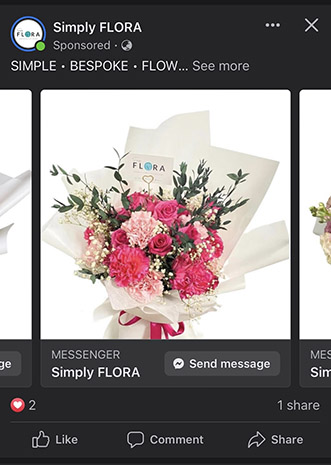
Social media ads can get your brand in front of specific audiences. (Source: Simply FLORA on Facebook)
16. Disregard traditional platform ‘rules’ to help your content stand out even more
You may have heard in the past that each social media platform has its own set of “rules,” like LinkedIn is only for B2B marketing, and TikTok is for Gen Z’s various dance challenges. But those rules no longer matter as much in 2025.
TikTok may have started out as a dance craze app, but users are increasingly using it to find tips for everything from home organization to business marketing, engaging with communities on various Toks (BookTok, CookTok, FitTok, etc.). And brands now regularly post memes on LinkedIn.
So don’t be afraid of breaking traditional platform “rules.” What matters is posting content that’s valuable, authentic, and relevant to your audience.
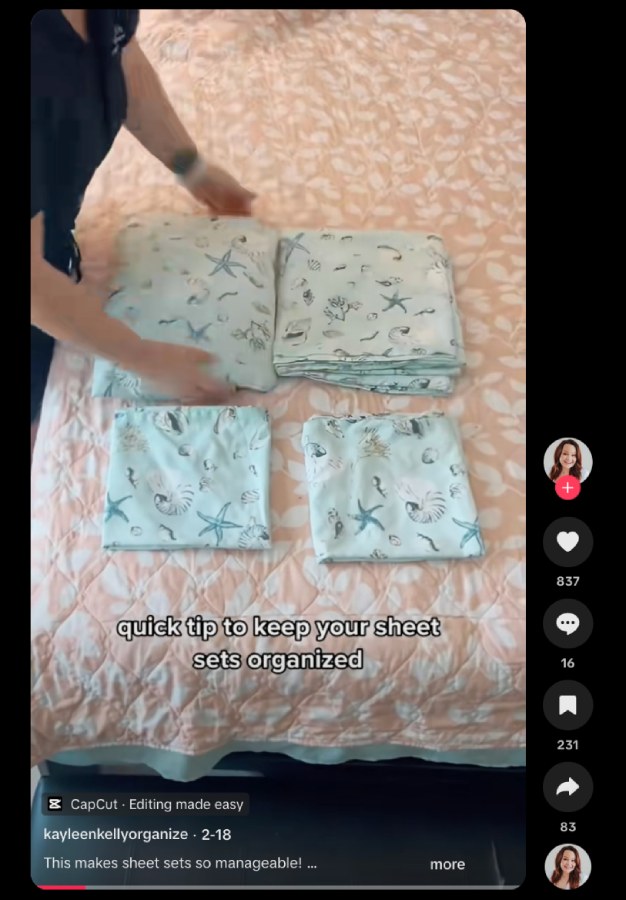
No longer just for dance crazes, TikTok is now where people find helpful tips. (Source: @kayleenkellyorganize on TikTok)
Benefits of social media marketing
Why is social media marketing important? The obvious benefit of social media is the ability to reach wide audiences at once. It’s also the best way to keep in constant touch with your community. Today, social media is like a public town hall where everyone online gathers — people and brands.
That’s the biggest reason social media marketing is important: It keeps your brand accessible to people and gives you an online presence. It also helps your brand appeal to the digital-first mindset and be more relatable to audiences.
- It’s the best way to build an active community around your business. Branding today is all about building engaged fan communities — aka the people who’ll keep coming back to your brand and ensure its longevity. Social media is still the best way to do that by letting you have real-time interactions with fans.
- It keeps you part of the current culture. Trends and conversations happen on social media. And if you want to be part of cultural conversations, which 93% of consumers think brands should do, you’ll need to be active on social.
- It’s the best way to find your people. Before creating an engaged community, you’ll need to find your people. Social media is the place to find audiences with the same interests and values as your brand. This is important because 57% of customers spend more on a brand they feel connected with.
- It makes your business more human and relatable. Authenticity is the number one thing today’s audiences want from brands online. Social media allows many opportunities to showcase your brand’s human side, from behind-the-scenes videos to Q&As with team members.
- 58% of consumers discover new businesses on social media. If you have a local brick-and-mortar business, being on social media can drive people to your doorstep. If you have a fully online setup, it can drive more traffic to your ecommerce store.
- Today’s consumers have a digital-first mindset. The digital revolution happened decades ago, but the pandemic only increased the digital-first mindset of today’s consumers. That includes using social media as a starting point for their buying journey. Social media isn’t just where customers discover brands, but where they research, follow, and keep up with them.
How to initiate your social media marketing strategy
The social media tips for marketing above are some of the best advice I can give from my experience as a social media marketer. Still, it’s always best to tailor a strategy to your business first and foremost.
A strategy gets your business on the right track and keeps you focused on your marketing goals. Building a social media marketing strategy starts with knowing your audience, selecting the best platforms, setting goals, and publishing content.
- Research your audience’s online habits. Social media is all about knowing your audience and catering to their interests. This starts with knowing how they spend their time online and on what platforms.
- Find the best social media platforms. As mentioned above, focus on the two or three best social media platforms that fit your business and your target audience. This keeps your strategies focused and sustainable instead of being spread out too thin.
- Set goals. All your efforts should point towards a clear and measurable goal, whether it’s increasing your follower count or month-over-month engagement rate.
- Plan, publish, and measure content. Plan content around your audience’s interests and needs, and publish regularly to keep your profile active. Measure your content’s effectiveness against your goals and adjust strategies accordingly.
Frequently asked questions (FAQs)
Bottom line
The social media marketing tips above are some of the biggest lessons I learned from being a social media marketer and tracking all the biggest social media changes in the last few years. If there’s one thing I want to impart most, it’s that people gravitate to brands that are authentic and use social media to connect, not just to sell. When people feel they can trust a brand, they’ll come back and engage time and again.



